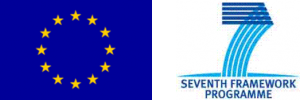About
CONVERGENCE covers six areas of research: the definition of a new fundamental unit of distribution and transaction, the VDI; new networking functionality; a new open source Middleware; a Community Dictionary Service; security and privacy mechanisms; applications, relevant to the needs of real life trials.
The VDI is a “package” of digital information with a unique, host-independent, self-certifying identifier, capable of encapsulating any kind of digital information, including information on media, services, people and “real world objects”. A VDI also contains metadata, describing its content. VDIs can be used both to publish and to subscribe to content. Networking functionality allows storage and routing of VDIs through the network. An open source middleware exposes network functionality to information providers and consumers, allowing them to search for, retrieve, modify and revoke VDIs. CONVERGENCE will make it possible to maintain access to VDIs when they move from one host to another, protect user security and privacy, and provide support for “digital forgetting”, ensuring that VDIs are deleted when they pass a user-defined expiry date. An RDF-based Community Dictionary Service supports search for user-defined metadata. CONVERGENCE concepts will be tested in iterative cycles of research, design and experiment, studying their usefulness in real-life business scenarios, integrated into partners’ product cycle, and using large-scale FIRE facilities to investigate their scalability and robustness.
CONVERGENCE targets professional and non-commercial providers and consumers of digital content, allowing them to publish, control, search for, and use content, independently of the structure or geographical location of the content. Users will be able to define their own policies for using, authenticating, protecting and revoking VDIs. The functionality provided by VDIs supports new models of use and new business models, difficult or impossible to implement on the current Internet architecture
READ MORE -> OVERVIEW
